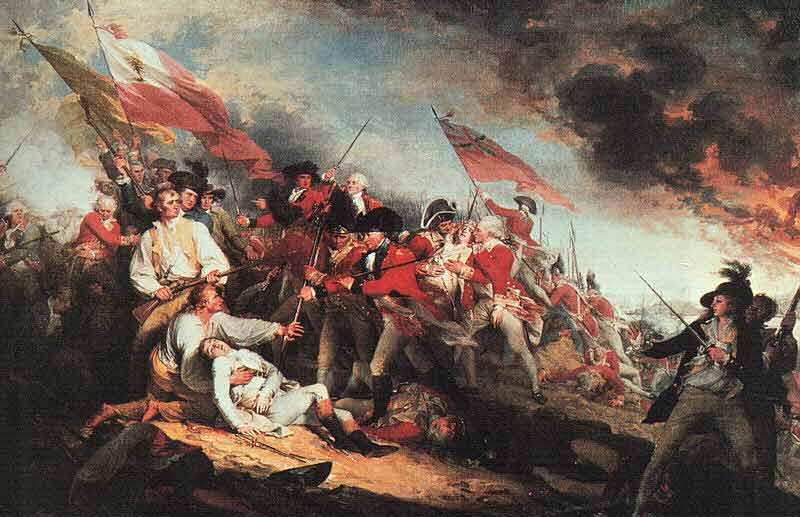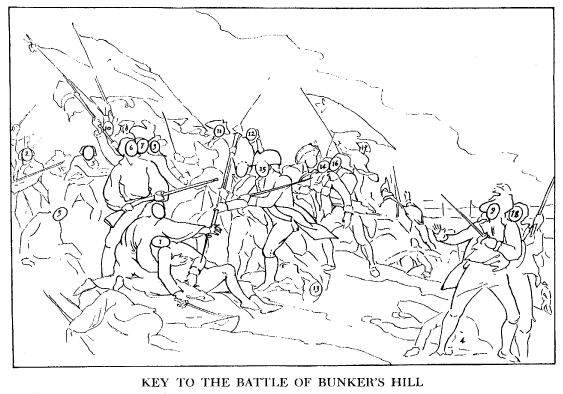
Jump to key figures in this painting.
Perhaps the first of the Revolutionary War masterpieces to be finished, this work was painted in the studio of Benjamin West in London and finished in March, 1786.
To explain it in Trumbull’s own words: “. . . This painting represents the moment when (the Americans having expended their ammunition) the British troops became completely successful and masters of the field. At this last moment of the action, Gen. Warren was killed by a musket ball through the head. The principal group represents him expiring, a soldier on his knees supports him, and with one hand wards off the bayonet of a British grenadier, . . . Col. Small . . . is represented seizing the musket of the grenadier, to prevent the fatal blow, . . . Near this side of the painting is seen General Putnam, reluctantly ordering the retreat of these brave men; … Behind Col. Small is seen Major Pitcairn, of the British marines, mortally wounded, and falling in the arms of his son, . . . Under the heel of Col. Small lies the dead body of Col. Abercrombie. Gen. Howe, who commanded the British troops, and Gen. Clinton, . . . are seen behind the principal group.”
Where Trumbull obtained the likeness of General Warren is not known. It is probable that he copied the portrait by Copley. The portrait of General Putnam resembles Trumbull’s pencil sketch of him. The portraits of the British officers, Howe, Clinton, and Small, were painted in London between 1784 and 1786 either from life or from portraits by others. The portrait of Major John Pitcairn was painted from “his son Dr. Pitcairn of London” in 1786. The portrait of Lieutenant William Pitcairn was probably his brother Thomas, as William died in 1779 at age twenty-four. A sketch in sepia and wash, five and one-half by eight and one-eighth inches, endorsed “J. Trumbull. Death of Gen. Warren at Bunker’s Hill June 17, 1775. Painted 1785 & 6,” and a pencil sketch and a sketch in detail in sepia wash and pencil, survived as preliminary studies made in West’s studio.
As one eminent art historian has said: “His picture [Battle of Bunker’s Hill] is the more remarkable, therefore, as a product of his imaginative genius working upon carefully collated facts gathered from various sources, from persons actually engaged in the fight, and from sketches made on the spot at a later day. That this picture has the character of an impression received by an eye witness is a triumph of art, and the historical accuracy of the work is matched by the technical skill with which it is executed. That Trumbull should have produced this masterpiece at the beginning of his career as an artist is only another evidence, often remarked of greater masters, that genius seems to require no preparation, that it is born with its powers already matured.”
Key figures in this painting
- Gen. Warren
- Putnam
- Col. Prescott
- Gardner
- Lt Col. Parker
- Major Knowlton
- McClery
- Moore
- Lt Grosvenor
- Rev. McClintock
- Gen. Howe
- Clinton
- Col. Abercrombie
- Major Pitcairn
- Small
- Lt Pitcairn
- Lord Rawdon
- Peter Salem


